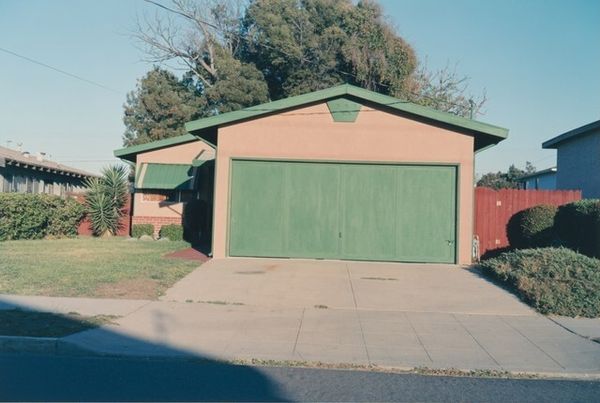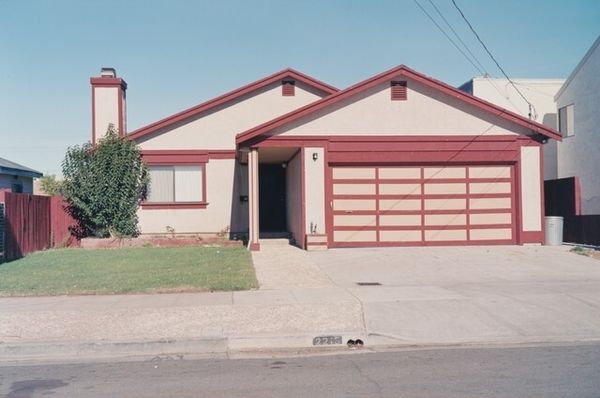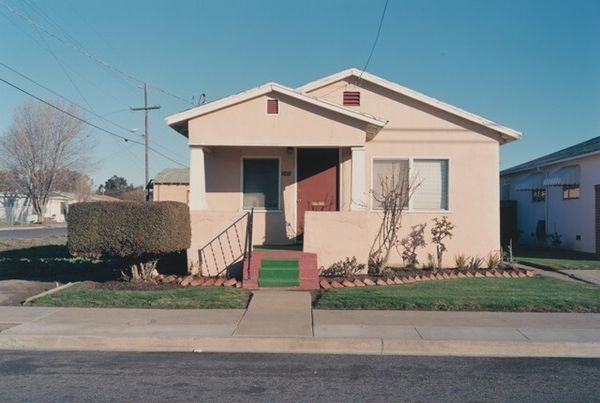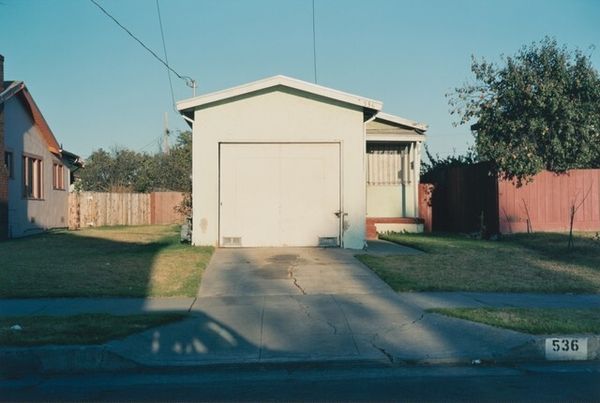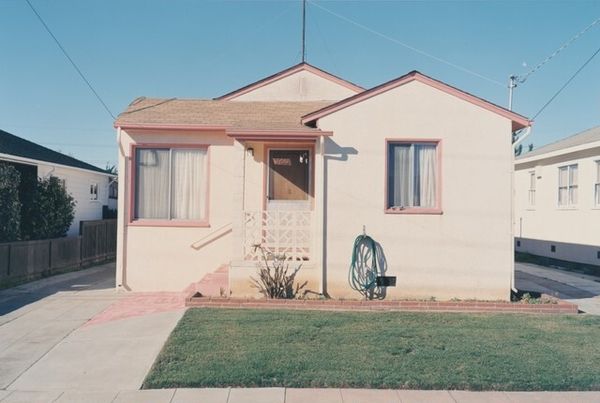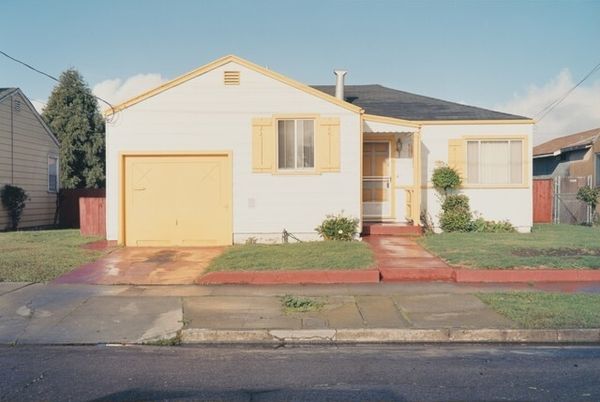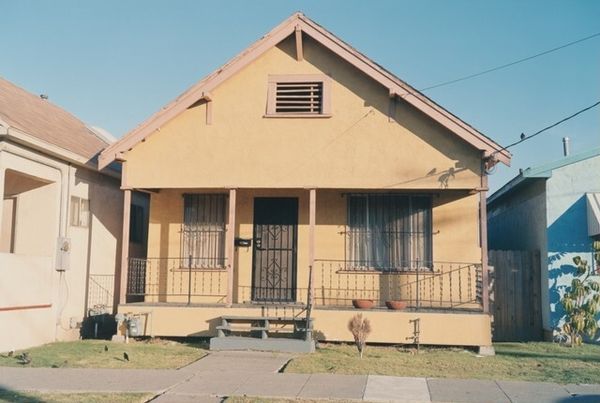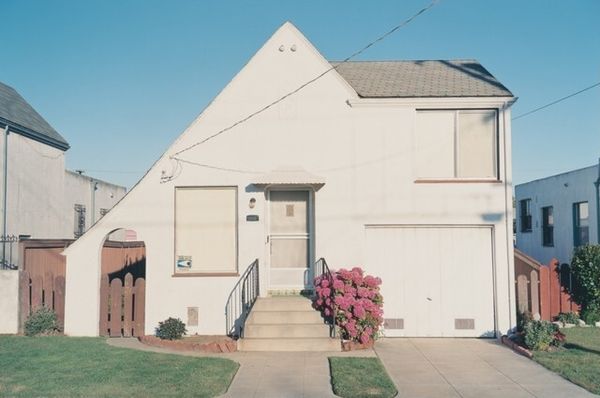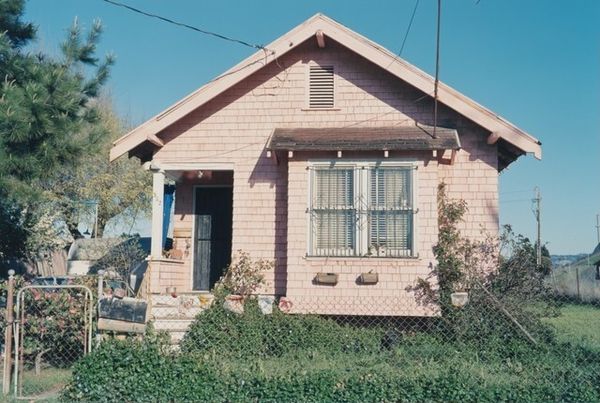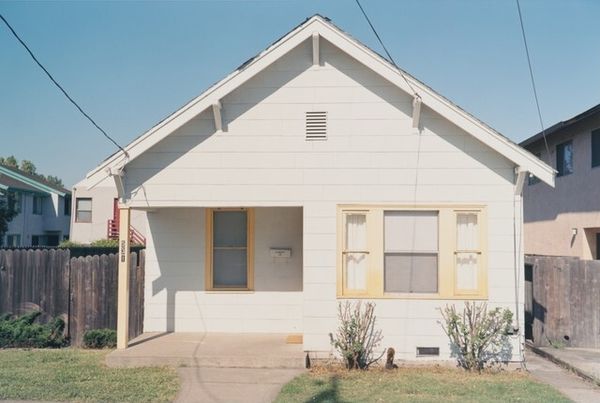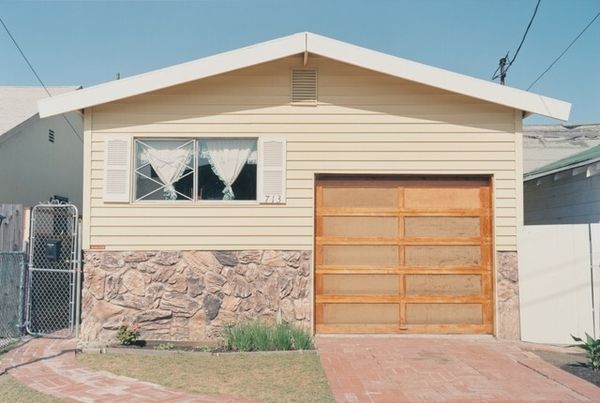
#
surveyor photography
#
outdoor environmental image
#
drone photography
#
building site documentary shot
#
street view
#
civil engineering
#
outdoor photography
#
urban environment
#
mechanical engineering model
#
public art photography
Dimensions: image: 15.24 × 22.86 cm (6 × 9 in.) sheet: 20.32 × 25.4 cm (8 × 10 in.)
Copyright: National Gallery of Art: CC0 1.0
Editor: Here we have Henry Wessel's "Real Estate #911416," a photograph from 1991. It depicts a rather unassuming single-story house. What I find most striking is how the house seems to almost flatten itself against the picture plane, lacking any dramatic perspective. How do you interpret this work? Curator: The "flattening" you describe is quite telling. The everyday is rarely seen as "symbolic," yet Wessel invites us to see these banal scenes as embodying broader societal forces. The near-identical facades and the repetition within suburbia are presented as both shelter and potential alienation. Note the house number. Editor: Yes, the number feels strangely clinical amidst the ordinary. Curator: Exactly! Think of architectural space as a kind of language. The number acts almost like a product serial—denoting individual existence and simultaneously pointing to anonymity within a larger system. The cultural memory embedded in the "dream home" has shifted toward a coded space within larger "Real Estate." The lines of the built architecture meet the powerlines above to suggest the psychological connections between these themes of autonomy and belonging, freedom and regulation. How does that "dream home" image function, you think, now in cultural terms? Editor: I suppose now the dream home is an individualised, and possibly isolating, unit in a much larger complex. Thanks, I hadn't thought about it in terms of serialisation before! Curator: Consider how the symbolic weight of 'home' has transformed. What stories do these seemingly simple images tell about us? Editor: I will certainly be looking at architecture with a fresh eye now, thinking about how it encodes so much about our culture and psychology. Thanks!
Comments
No comments
Be the first to comment and join the conversation on the ultimate creative platform.
